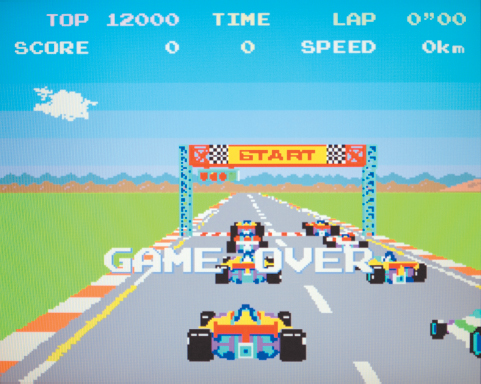Arcades and Classic Games
By the late 1970s and early 1980s, games like Asteroids, Pac-Man, and Donkey Kong filled arcades and bars, competing directly with traditional pinball machines. In a way, arcades signaled electronic gaming’s potential as a social medium, because many games allowed players to compete with or against each other, standing side by side. To be sure, arcade gaming has been superseded by the console and computer. But the industry still attracts fun-seekers to businesses like Dave and Buster’s, a gaming/restaurant chain operating in more than fifty locations, as well as to amusement parks, malls, and casinos.

To play the classic arcade games, and many of today’s popular console games, players use controllers like joysticks and buttons to interact with graphical elements on a video screen. With a few notable exceptions (puzzle games like Tetris, for instance), these types of video games require players to identify with a position on the screen. In Pong, this position is represented by an electronic paddle; in Space Invaders, it’s an earthbound shooting position. After Pac-Man, the avatar (a graphic interactive “character” situated within the world of the game) became the most common figure of player control and position identification. In the United States, the most popular video games today assume a “first-person” perspective in which the player “sees” the virtual environment through the eyes of an avatar. In South Korea and other Asian countries, many real-time strategy games take an elevated “three-quarters” perspective, which affords a grander and more strategic vantage point on the field of play.